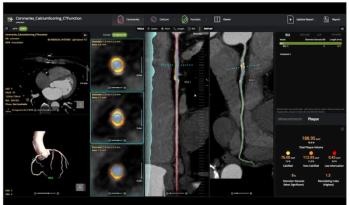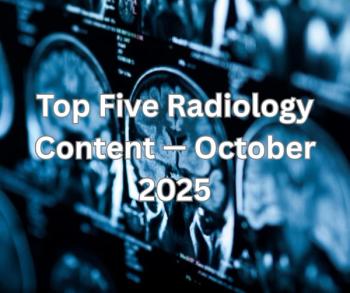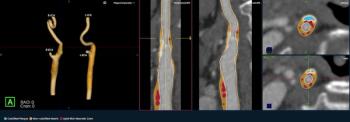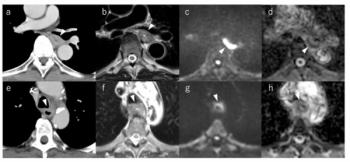
Expanded CT protocol spots stroke’s origin, changes treatment
CT protocols for ischemic stroke can be expanded to cover the heart as well as the head and neck, obviating other imaging tests that may be necessary to pinpoint the source of the stroke, a new study finds.
CT protocols for ischemic stroke can be expanded to cover the heart as well as the head and neck, obviating other imaging tests that may be necessary to pinpoint the source of the stroke, a new study finds.
A new
The researchers looked specifically at ischemic stroke, which can originate in the heart or from blood vessels in the neck and head. They analyzed the potential of multislice CT as a fast and cost-effective way to detect the main causes of ischemic stroke. The investigators compared a single-session MSCT examination of the heart, neck, and brain vessels with established imaging methods in 46 patients who had recently experienced an ischemic stroke.
Typically, physicians determine the cause of stroke using duplex ultrasonography, MR angiography, or CT angiography of the neck and brain vessels and transthoracic and transesophageal echocardiography.
Almost half the stroke cases had cardiac sources, while 20% were caused by major arterial atherosclerosis.
MSCT detected cardiac sources of stroke in 18 of 25 cases, for a sensitivity of 72%. The technique’s sensitivity increased to 100% for detection of major arterial atherosclerosis. Overall, MSCT facilitated stroke classification in 38 of the 46 patients, or 83%.
“CT allows a fast diagnosis and helps to identify the cause of the stroke during a single examination,” said Dr. Loic Boussel, a professor of radiology at Louis Pradel Hospital in Bron, France, and lead author of the study. “Moreover, because it is quick, the exam is well tolerated, which is critical in acute stroke patients who may be unstable and agitated.”
When physicians know where a stroke originates, they can treat it accordingly.
“The treatment of cardiac sources necessitates anticoagulant therapies plus or minus surgical or percutaneous closure of a patent foramen ovale or atrial septal defect if present,” he said. “The treatment of vascular sources necessitates aspirin and statins plus or minus surgical or percutaneous treatment of the carotid bifurcation or of an intracranial stenosis.”
A physician cannot use just a patient’s symptoms to determine the stroke’s origin, according to Boussel.
“This is why transthoracic echocardiography and transesophageal echocardiography are performed in the standard protocol, and why we studied the heart with CT,” he said.
The CT protocol has two main limitations, Boussel said: It exposes the patient to a significant radiation dose and it requires two intravenous contrast injections to study the chest and neck areas. Advances in CT technology could help reduce the radiation dose and the total amount of iodinated contrast material required, he said.
Newsletter
Stay at the forefront of radiology with the Diagnostic Imaging newsletter, delivering the latest news, clinical insights, and imaging advancements for today’s radiologists.






























